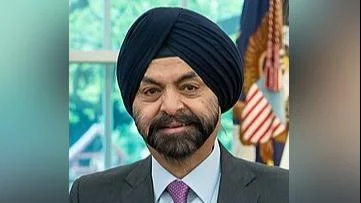For 51-year-old Ricardinho Nunes from the Apinajé village in São Valério, Tocantins, his aspiration was to leave his ferryman days behind. He succeeded. For seven years, he managed the ferry that shuttled residents and goods across the Manoel Alves River between São Valério and Santa Rosa do Tocantins in Northern Brazil. The ferry, which was merely tethered by a cable, was at the mercy of the river's whims, posing a hazard to all who crossed.
“Countless lives were in my hands—kids, seniors, non-swimmers. I dreaded the ferry's potential failure, which could have been disastrous,” he shared. On numerous occasions, he had to operate the ferry after hours to transport those in urgent need of medical care.
When the ferry wasn't an option, the only alternative was a lengthy 180 km detour connecting the two towns, a route that was not only time-consuming but also costly for local farmers. Hence, the entire community longed for the bridge over the Manoel Alves. “Even us ferrymen were in favor despite the risk of job loss,” Ricardinho admitted.
After five decades of advocacy, the community celebrated the bridge's opening in May 2022. The 150-meter concrete structure is part of the Integrated and Sustainable Regional Development Project of Tocantins (PDRIS), backed by the state government and the World Bank.
The initiative poured $282 million into seven sectors: transportation, education, agriculture, environment, tourism, water resources, and public administration enhancement. “Over nine years we undertook 718 activities,” Mauricio Fregonesi, project manager for Tocantins government recalled.
The PDRIS was responsible for upgrading 2,200 km of state roads. Additionally it facilitated construction of galleries viaducts culverts and bridges thereby improving access for residents across 72 municipalities. In total 2 300 projects were completed making 5 500 km of secondary roads in Tocantins more accessible as outlined by Carlos Bellas Transport expert at World Bank.
Ricardinho may have given up ferrying but he wasn't left jobless He transitioned to a role with São Valério City Hall where he now performs maintenance duties in schools and on city property "It's demanding work but it comes with far fewer worries" he says with a sense of contentment Adeusil Antonio Gonçalves a 64 year old retired mason and electrician from Santa Rosa reminisces about a time before ferry when basic necessities for Apinajé village had to be transported by donkey cart to river edge
“If cart was too large for vessel someone would cross over to announce goods arrival Then few canoes would come collect them” he recalls
“Back then we relied on bicycles horses donkeys for transport Things have changed rapidly since Keeping up with latest car models is challenge” he says with chuckle
One Wednesday morning Adeusil joined his son electrician Roberto Gonçalves as crossed new bridge from Santa Rosa to São Valério to service security cameras on farm With bridge now operational Roberto finds easier navigate area “Bridge has been boon for all us here For instance I can now attend more customers” Roberto explains
Matheus Vitor da Silva agronomist engineer farmer from Apinajé village recalls community collective effort final stages bridge construction driven urgency see completed “Heavy rains had delayed embankment work Once there break weather we added more trucks assist government teams that helped finish job” he said
Matheus and family soy corn producers originally from Paraná Southern Brazil witnessed firsthand logistical benefits Now their produce travels shorter distances requiring fewer trucks larger size thanks bridge capacity resulting significant fuel savings
"We used spend six reais per sack transport but now it's down between four four fifty reais" Matheus notes "With annual production thirty five thousand forty thousand sacks we're saving up sixty thousand reais freight costs"
“Tocantins major producer essential goods Brazil project's road infrastructure designed enhance logistics among other things” said Fatima Amazonas co-managed project nearly five years
New infrastructure made noticeable difference lives region inhabitants Now achieving daily objectives whether going work attending school seeking medical care shopping simple crossing bridge
___

